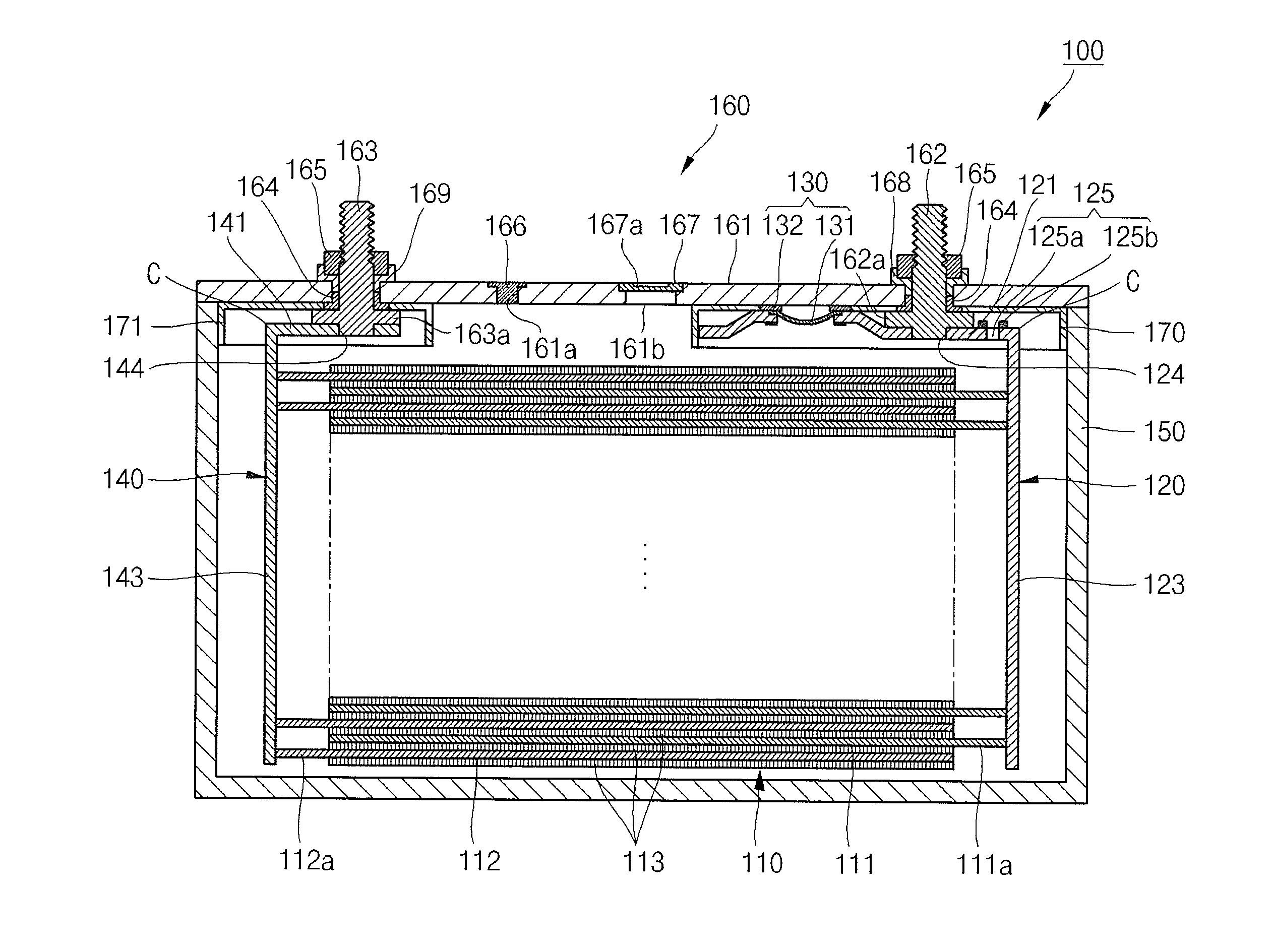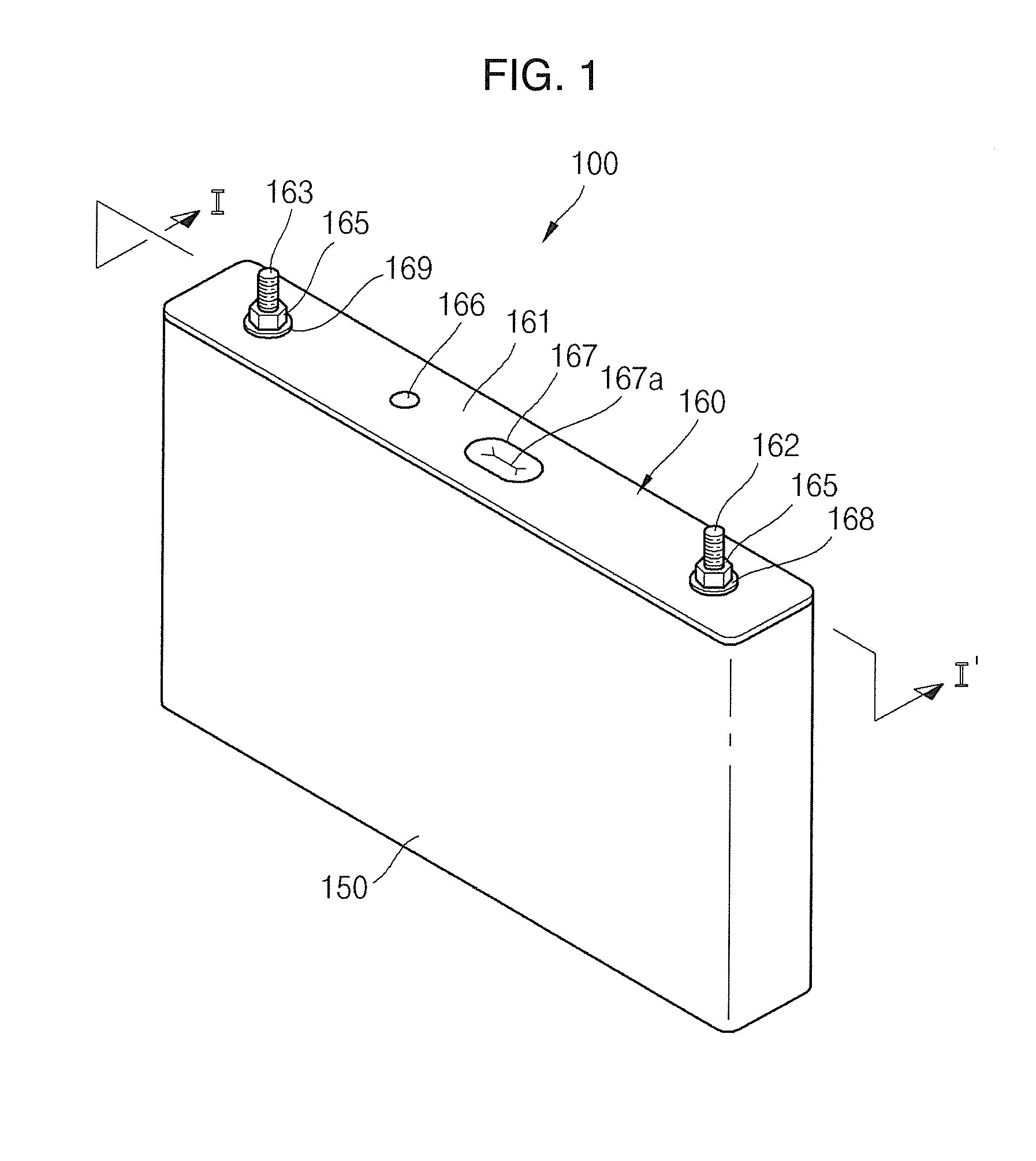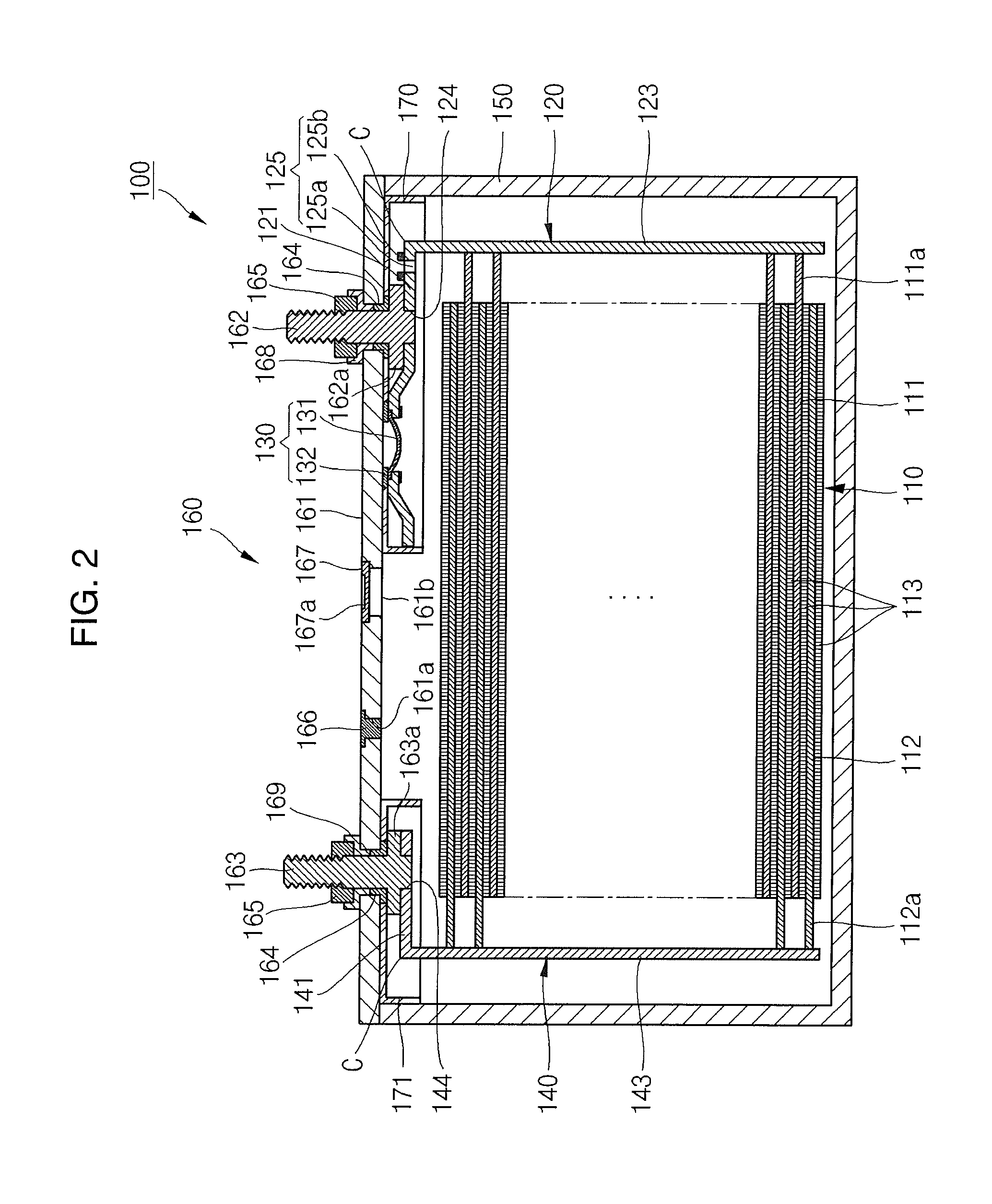Secondary battery
a second battery and battery technology, applied in the field of secondary batteries, can solve the problems of short circuit according to stimulus, secondary battery may catch fire or explode, etc., and achieve the effects of reducing the overall weight and volume of the battery, reducing the number of components, and reducing manufacturing costs and process steps
- Summary
- Abstract
- Description
- Claims
- Application Information
AI Technical Summary
Benefits of technology
Problems solved by technology
Method used
Image
Examples
Embodiment Construction
[0041]Hereinafter, embodiments of the present invention will be described in detail with reference to the accompanying drawings.
[0042]FIG. 1 is a perspective view of a secondary battery 100 according to an embodiment of the present invention, FIG. 2 is a cross-sectional view of the secondary battery of FIG. 1 taken along the line I-I′, FIG. 3 is an enlarged cross-sectional view illustrating a short circuit member 130 shown in FIG. 2, FIG. 4 is a perspective cross-sectional view illustrating the short circuit member 130 shown in FIG. 2, and FIG. 5 is a perspective view illustrating the short circuit member 130 shown in FIG. 2.
[0043]Referring to FIGS. 1 through 5, the secondary battery 100 includes an electrode assembly 110, a first collecting plate 120, the short circuit member 130, a second collecting plate 140, a case 150, and a cap assembly 160. The electrode assembly 110 is formed by winding or stacking a first electrode plate 111, a separator 113, and a second electrode plate 11...
PUM
 Login to view more
Login to view more Abstract
Description
Claims
Application Information
 Login to view more
Login to view more - R&D Engineer
- R&D Manager
- IP Professional
- Industry Leading Data Capabilities
- Powerful AI technology
- Patent DNA Extraction
Browse by: Latest US Patents, China's latest patents, Technical Efficacy Thesaurus, Application Domain, Technology Topic.
© 2024 PatSnap. All rights reserved.Legal|Privacy policy|Modern Slavery Act Transparency Statement|Sitemap



